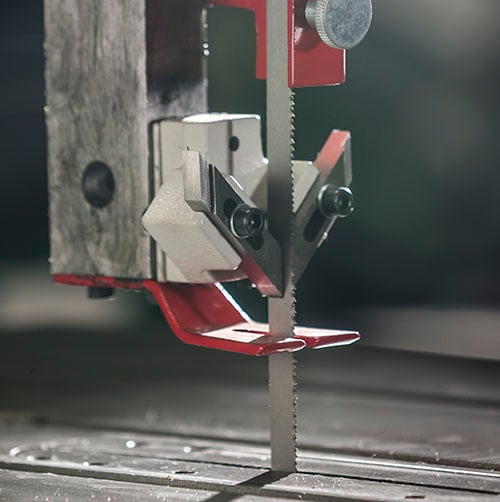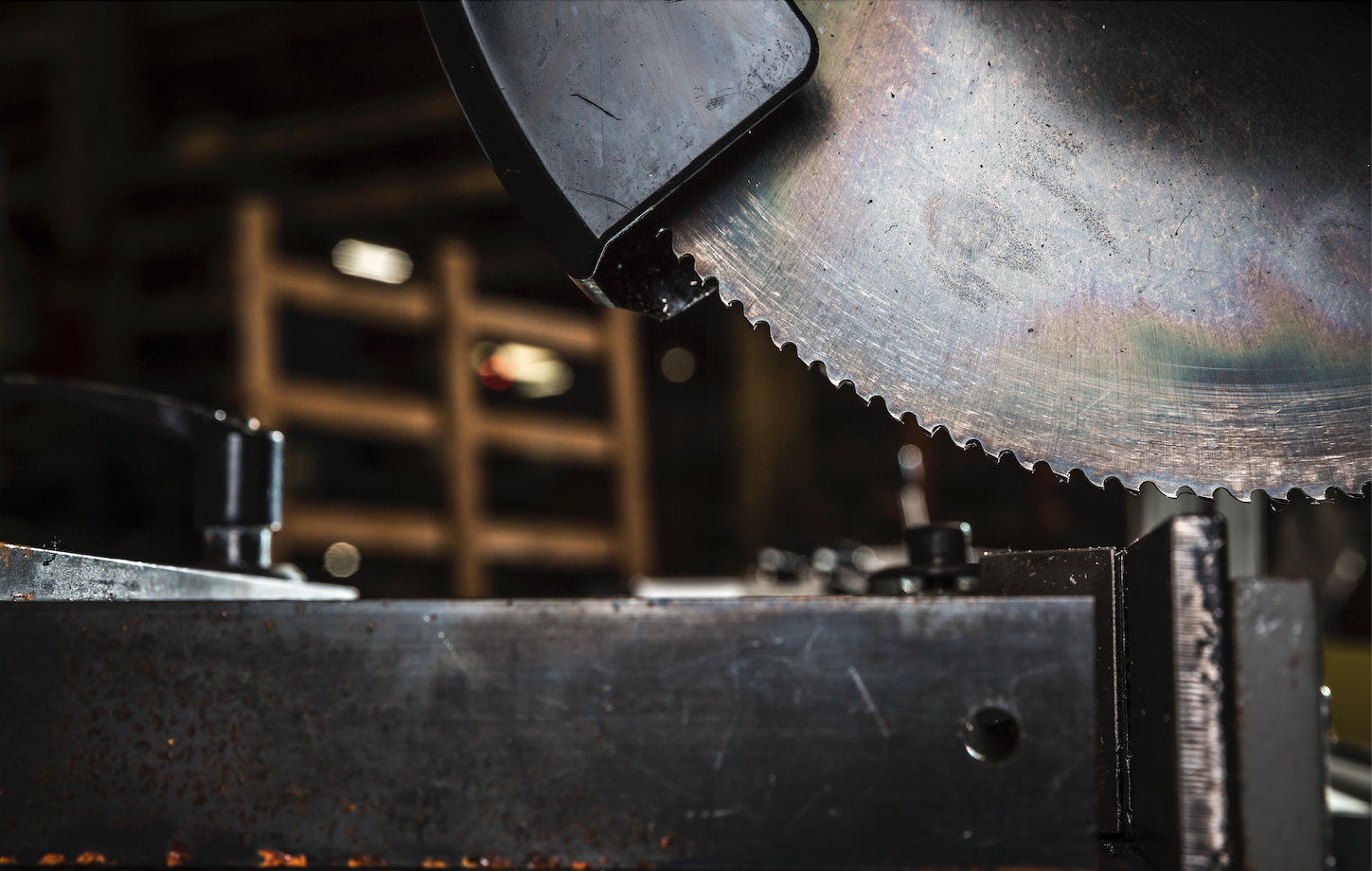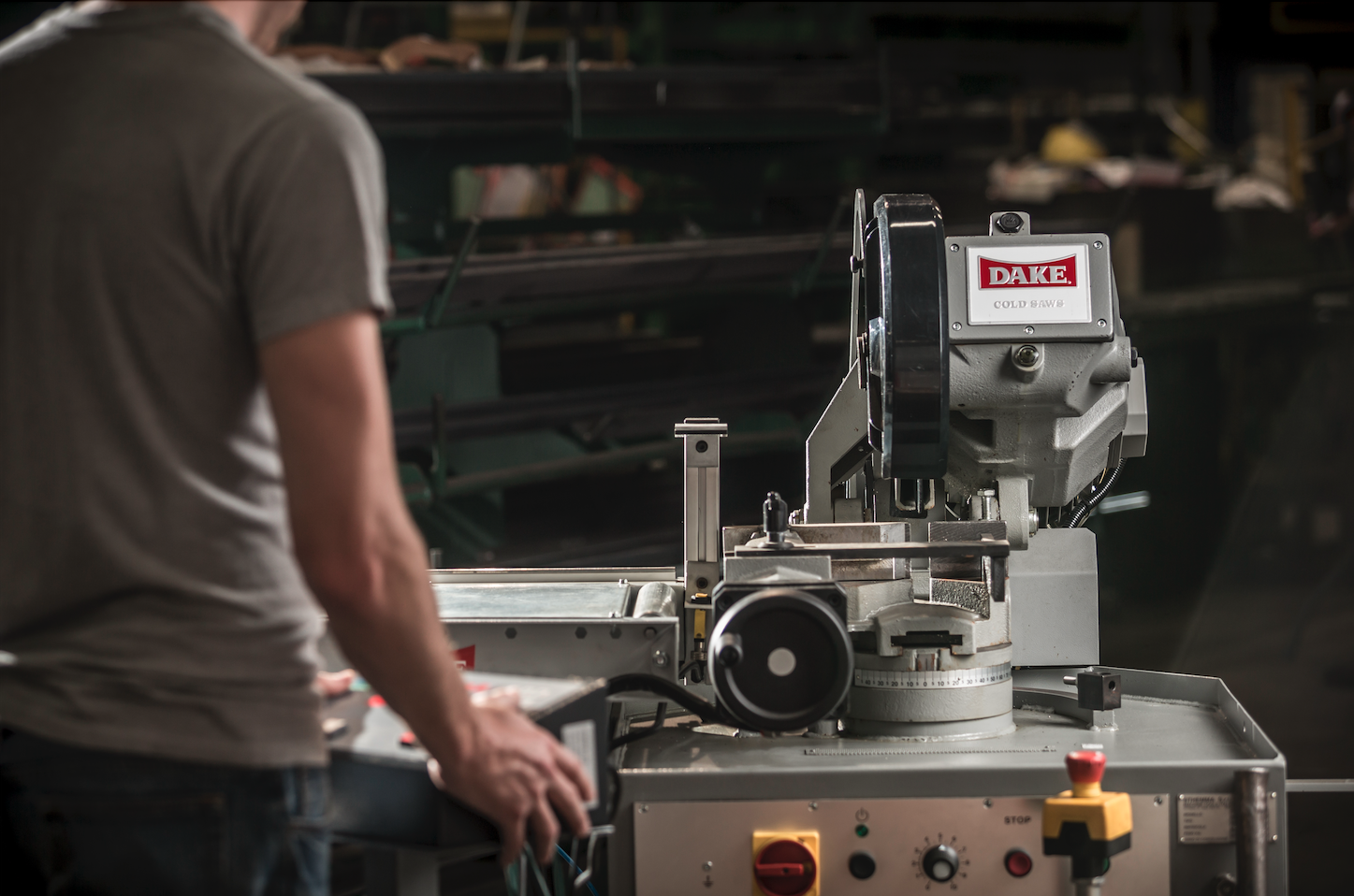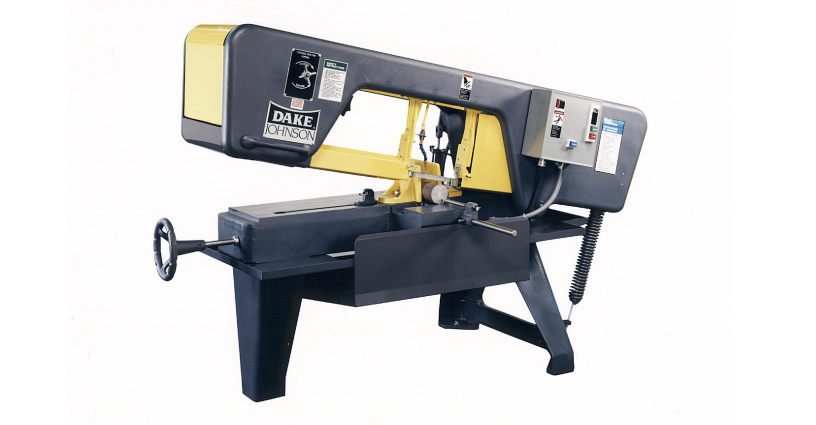If hydraulic presses are the bread to every metalworking shop, then bandsaws are most certainly the butter. It’s nearly impossible to run an efficient production line without one.
Here at Dake, we offer vertical and horizontal bandsaws to suit any floor plan. Whether you work in a small shop out of your own home or run a commercial-grade facility, we’ve got the right bandsaw machines that match your requirements.
As with any metalworking machine, proper tooling and maintenance are necessary to keep things running smoothly.
This post will look at bandsaw blades and everything you need to know about choosing the right one for the job.
Key Factors to Consider
When considering which bandsaw blade you should use for a specific project, there are a few factors that you should keep in mind. Answer the following questions:
- What size blade does your bandsaw need?
- What material do you want to cut?
- What type of cuts will you need to make?
Once you answer these questions, you will be able to figure out what width you should go with. One thing to keep in mind is that wider bandsaws are best for making straight cuts into thick metals.
This is known as cut-off sawing. Meanwhile, thinner blades are better for making curved cuts. This is called contour sawing.
Teeth Matter
Another element that will affect the cut is teeth. We aren’t just talking about the size and shape of the teeth either. The most important aspect when it comes to bandsaw teeth is the number of teeth per inch (TPI).
Determining the proper TPI will result in the appropriate feed rate and the desired finish. A general rule of thumb to follow is the more teeth per inch a blade has, the finer the cut will be.
The feed rate will be slow, but it will also be very smooth. Fewer teeth per inch mean that the feed rate will be faster, and the cut will be rougher.
Once you have decided on the appropriate TPI, it’s time to figure out which tooth configuration is best for the project at hand.
The three most common bandsaw blade teeth shapes are regular, hook, and skip.
Regular-tooth blades are the most popular due to their straight-faced teeth, deep gullets, and even spacing. Used for general sawing purposes, you can perform cut-off or contour sawing on thin sheet metal. These blades have a 0° (straight) rake.
Hook-tooth blades are another popular style for metalworkers. Featuring large, widely spaced teeth and deep gullets, they can be used to make fast, rough cuts on thicker metal materials. The blade’s undercut face has a positive 10° rake, which is perfect for making long cuts.
Finally, skip-tooth blades are typically used for sawing nonferrous metals. The widely spaced teeth and shallow gullets help to reduce buildup, and sharply angled teeth metal shaving to easily come out. These blades have a 0° rake and 90° teeth.
Metal Materials
At this point, you should have already chosen your metal material. However, we have a few more tips for you to keep in mind. Harder blades cut harder metals, but they do so at a slower rate.
Since the bandsaw blades are made out of metal, it is crucial that you choose the correct one for the project you’re currently working on. If you choose the wrong blade for the material you’re working with, you could damage the blade.
The three main types of bandsaw blades for cutting metal are carbon steel, high-speed steel, and alloy steel. Carbon steel blades are used for cutting softer metals like aluminum, copper, bronze, brass, and other nonferrous metals.
Alloy steel blades are used for cutting harder metals like steel; and high-speed steel blades are used for cutting stainless steel.
Pro tip: You can also use a bi-metal blade for cutting metal pipes, tubes, angles, flat stock, mixed metal materials, die steel, structural steel, tool steel, carbon steel, stainless steel, and even nonferrous metals.
Bi-metal blades consist of two metals that have been welded to a flexible backer via an electron beam. They have an average lifespan of three to five years.
Install or Change Your Bandsaw Blade
Before you begin the installation process for a bandsaw blade, please be sure to follow all of the appropriate safety precautions, wear protective gear, and unplug the bandsaw from its power source.
Step 1: Loosen the upper wheel tension so that the blade guides are away.
Step 2: Slip the desired blade over the wheels and bring the tension back up.
Step 3: Get the new blade on the right track by turning the upper wheel and adjusting the tilt of the wheel’s axis at the same time. The blade should track in the center of the rim.
Step 4: Adjust the blade guides starting with the thrust bearings. Then adjust the upper and lower guides followed by the side guides.
Step 5: You can use a squat to ensure that the blade is not being pushed out of the track.
Step 6: Use a piece of white paper for clearance between the blade and the guides.
Measure a Bandsaw Blade
Do you need to know how long your bandsaw blade is? We have a quick formula that you can use to find out.
First, you need to adjust the tension to approximately 1/3 of the way from the closing position. Next, you can measure the diameter of the machine’s wheels where the blade tracks. Then, multiply each wheel’s diameter by Pi, and divide the result by the number of wheels.
Here is an example using a 14-inch wheel and a 12-inch wheel:
14 (3.1416) / 2 = 21.992
12 (3.1416) / 2 = 18.84
21.98 + 18.84 = 40.82
At this point, you will need to measure the space between the axles. For bandsaws with two wheels, you will use this measurement twice.
Here is an example using a 36-inch axle to axle measurement:
36 x 2 = 72
Now, you need to add the axle dimension to the wheel dimension that you already found to get the total length of the bandsaw in inches.
72 + 40.82 = 112.82
Get in Touch
For more information on vertical and horizontal bandsaws, get in touch with our experts today.
-1.jpg?width=1200&height=525&name=DAKE003_%20Logos_Red%20(002)-1.jpg)



